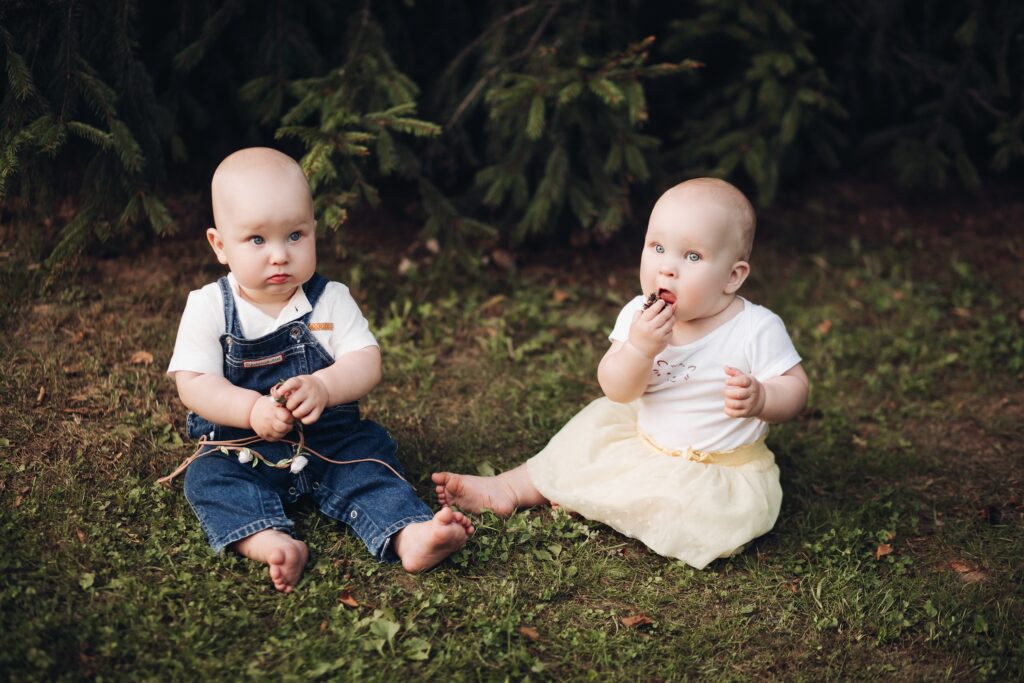
Twin Dynamics: How Genetics and Development Influence Sibling Relationships
A groundbreaking study reveals that developmental differences significantly influence dominance roles in twin relationships. Typically developing twins are perceived as dominant over their nontypically developing siblings, a pattern that persists through childhood, even when developmental challenges improve. Parental biases and genetic factors also play pivotal roles in shaping these dynamics, emphasizing the need for strategies to foster balanced relationships.

Note: This article is intended for general information and educational purposes. It summarizes scientific research in accessible language for a broad audience and is not an official scientific press release.
Who Conducted the Study?
According to Neuroscience News, The research was conducted by Prof. Ariel Knafo-Noam and Dr. Yonat Rum from the Hebrew University of Jerusalem, alongside Dr. Hila Segal and Adi Barkan from The Academic College of Tel-Aviv–Jaffa. Their findings were published in the esteemed journal Family Relations.
Study Design
The study surveyed over 1,500 parents of twins aged 3 to 9, focusing on monozygotic (identical) and dizygotic (fraternal) twins. Researchers investigated how differences in developmental conditions—especially when one twin had a developmental condition and the other did not — influenced perceptions of dominance.
How the Study Was Conducted
Participants filled out detailed questionnaires designed to assess developmental milestones, behavioral patterns, and perceived dominance roles between twins. The study employed statistical analysis to evaluate long-term trends in dominance dynamics, considering both genetic and environmental factors. In addition, researchers compared data with previous studies on sibling dynamics, enhancing the reliability of their findings. A subset of participants also underwent follow-up interviews to gather qualitative insights into parental perceptions and behaviors.
Unlike many prior studies, this research incorporated both monozygotic and dizygotic twins, allowing for a deeper understanding of how genetic similarities influence relational symmetry. The inclusion of twins with and without developmental challenges also provided a nuanced perspective on the interplay between abilities and dominance.
Key Innovations
- Focus on Developmental Asymmetry: Unlike earlier studies, this research highlights how asymmetry in abilities, rather than the presence of a developmental condition itself, drives dominance roles.
- Role of Genetic Similarity: The study uniquely identifies differences in dominance patterns between monozygotic and dizygotic twins, linking genetic similarity to relationship symmetry.
- Parental Contrast Effect: It delves into how parental biases reinforce perceived differences, shaping long-term relational dynamics.
Key Findings
- Developmental Impact on Dominance: Typically developing twins were consistently perceived as dominant over their siblings with developmental challenges. For instance, a twin with advanced verbal skills often took on leadership roles during playtime, while their sibling might follow.
- Persistence Over Time: Dominance imbalances persisted even when the developmental condition of the nontypically developing twin improved. This highlights the long-term influence of early relational dynamics.
- Influence of Genetic Similarity: Monozygotic twins displayed more balanced relationships compared to dizygotic twins. For example, identical twins often shared leadership responsibilities in group activities, reflecting their stronger genetic and behavioral alignment.
- Parental Biases Reinforce Roles: Parents tended to exaggerate differences between twins through what researchers call the “contrast effect.” For example, labeling one twin as the “quiet” or “responsible” sibling inadvertently reinforced those roles.
- Shared Developmental Conditions: Twins with similar developmental challenges exhibited more cooperative dynamics. For example, twins both experiencing delayed motor skills often worked together to overcome physical obstacles, fostering mutual support.
Cognitive and Social Implications
Cognitive Abilities
The study underscores how dominance dynamics influence cognitive and emotional development. Dominant twins often develop stronger leadership, decision-making, and communication skills due to their frequent role as leaders in interactions. For example, a dominant twin might take charge in group tasks, leading discussions and delegating responsibilities.
On the other hand, nontypically developing twins may encounter challenges in self-confidence and assertiveness, particularly in competitive or high-pressure situations. They might feel overshadowed, leading to hesitation in expressing their ideas or participating in group activities. This can hinder their ability to develop problem-solving and independent thinking skills.
Balanced relationships can mitigate these disparities. When both twins are encouraged to share responsibilities and leadership roles, they are more likely to develop mutual respect and effective collaboration skills. For instance, cooperative twins might excel in academic group projects or extracurricular team activities, as they learn to value each other’s strengths and contributions.
Encouraging individuality also plays a vital role in fostering cognitive growth. Allowing twins to explore their interests independently—such as joining separate clubs or pursuing distinct hobbies—can enhance their creativity and critical thinking abilities. For example, one twin might develop strong artistic skills in a painting class, while the other hones analytical thinking in a coding workshop.
Parents and educators can support cognitive development by providing equal opportunities for both twins to take on leadership and problem-solving roles. For instance, rotating responsibilities in household chores or classroom settings ensures that both siblings gain confidence in their abilities. Structured activities, such as puzzle-solving games or collaborative projects, can also nurture their cognitive skills and reinforce their sense of partnership.
Ultimately, understanding and addressing dominance dynamics in twin relationships can help both siblings reach their full cognitive potential, fostering a balanced and supportive environment for growth.
Social Interactions
The dominance dynamic affects how twins interact with others. Dominant twins may be perceived as more assertive and charismatic, while their siblings might develop quieter, more reflective personalities. These traits, while not inherently negative, can influence how twins form relationships outside their sibling bond.
Providing opportunities for each twin to build friendships independently can mitigate these patterns. For example, encouraging extracurricular activities tailored to each child’s strengths can help both twins develop unique social skills.
Significance for Science, Medicine, Education, and Society
Science and Medicine
This research offers critical insights into twin psychology, contributing to our understanding of how early relational dynamics shape long-term behavior. Medical professionals working with families of twins can use these findings to guide interventions that promote balanced sibling relationships.
Education
Educators can implement strategies to ensure both twins have equal opportunities to participate and lead in classroom settings. For instance, assigning rotating leadership roles in group projects can prevent dominance imbalances.
Society
Understanding twin dynamics has broader societal implications, particularly in fostering inclusive environments that recognize individual strengths. By promoting awareness of these patterns, communities can support healthier family relationships and reduce the risk of entrenched roles.
Conclusion
This study highlights how developmental differences, genetic factors, and parental perceptions shape dominance roles in twin relationships. Early awareness of these dynamics allows parents and caregivers to foster healthier and more balanced relationships, promoting cognitive and emotional growth for both twins. By encouraging individuality and reducing biases, families can help both children thrive.
The information in this article is provided for informational purposes only and is not medical advice. For medical advice, please consult your doctor.













